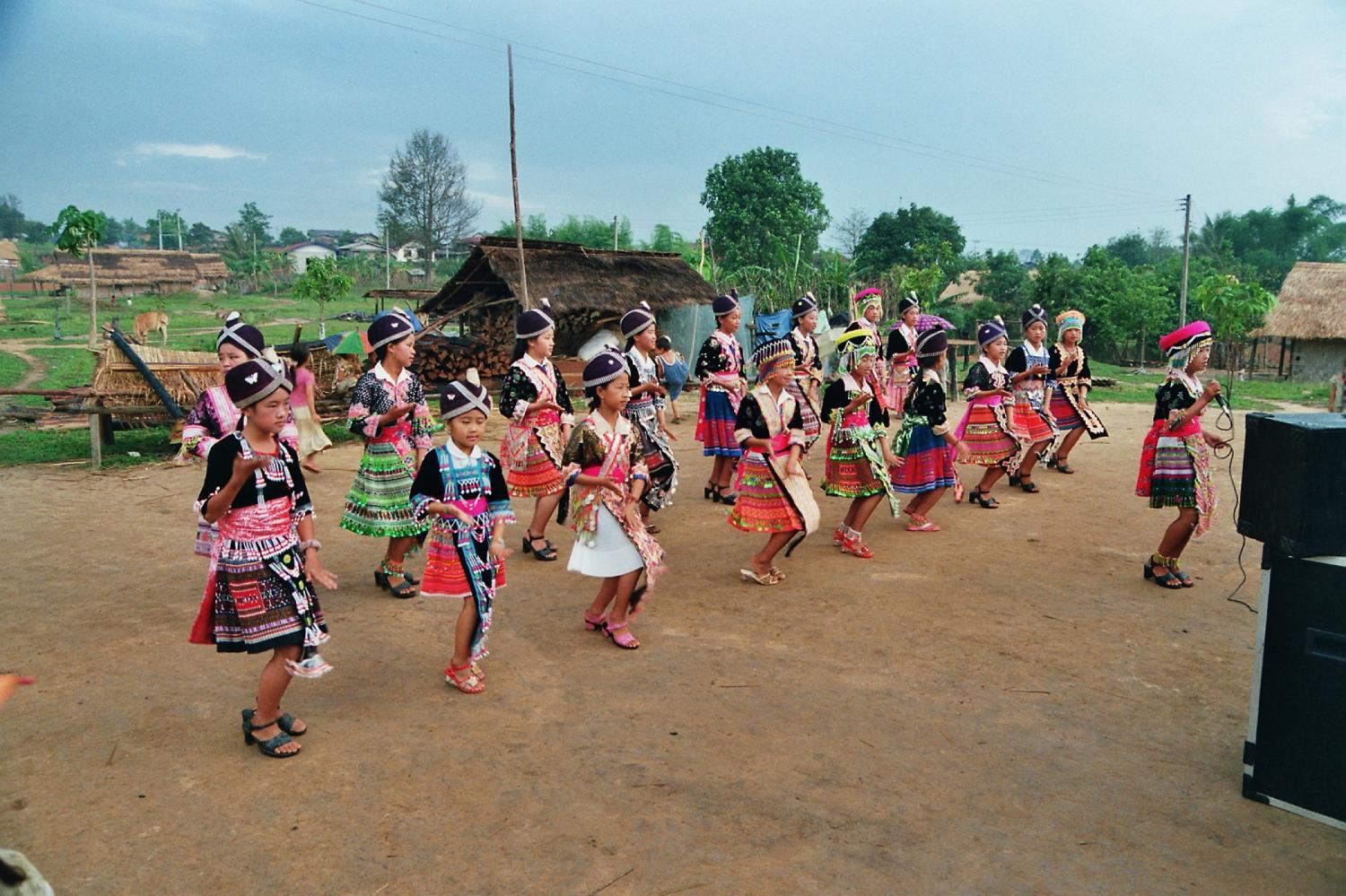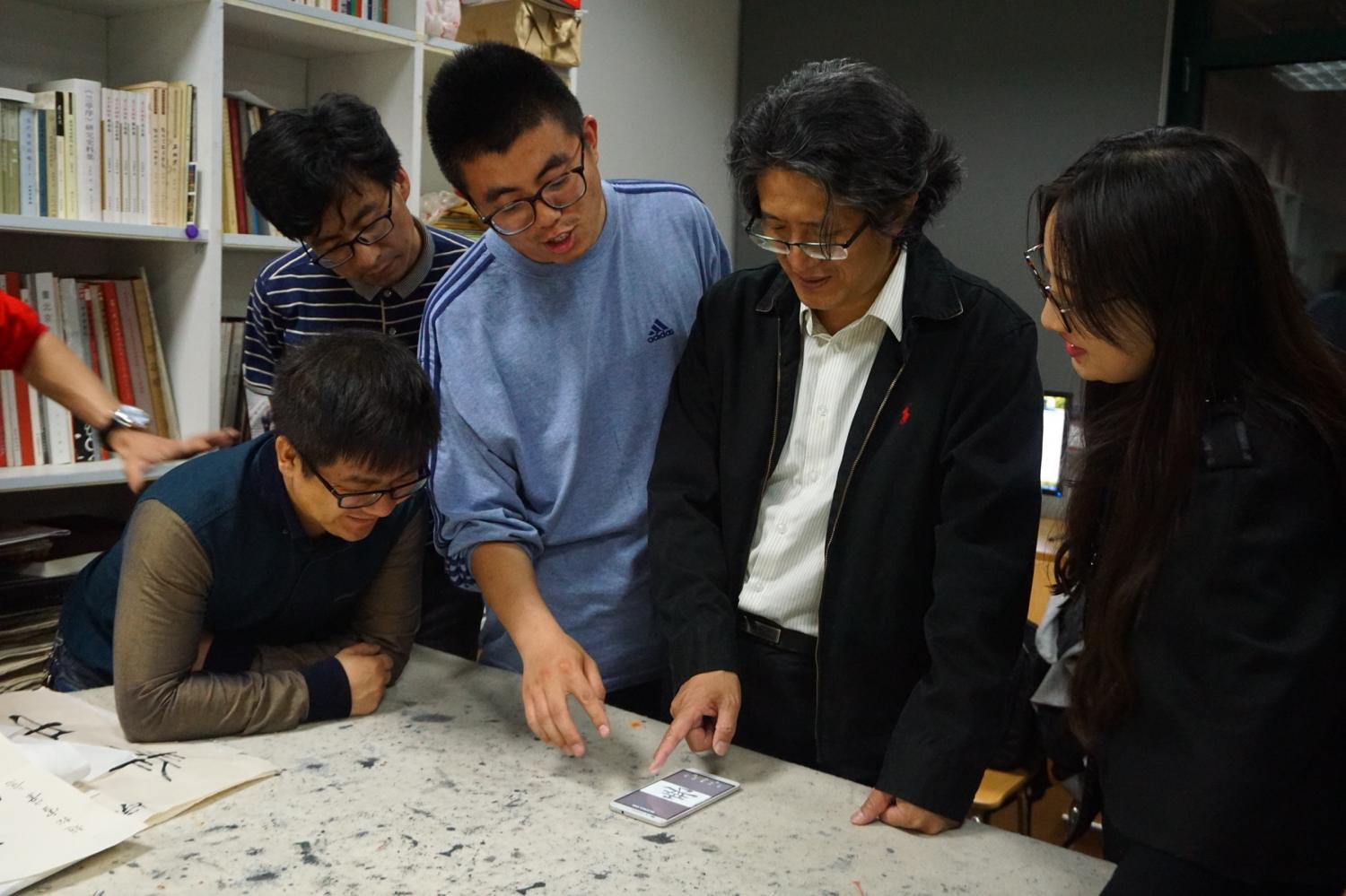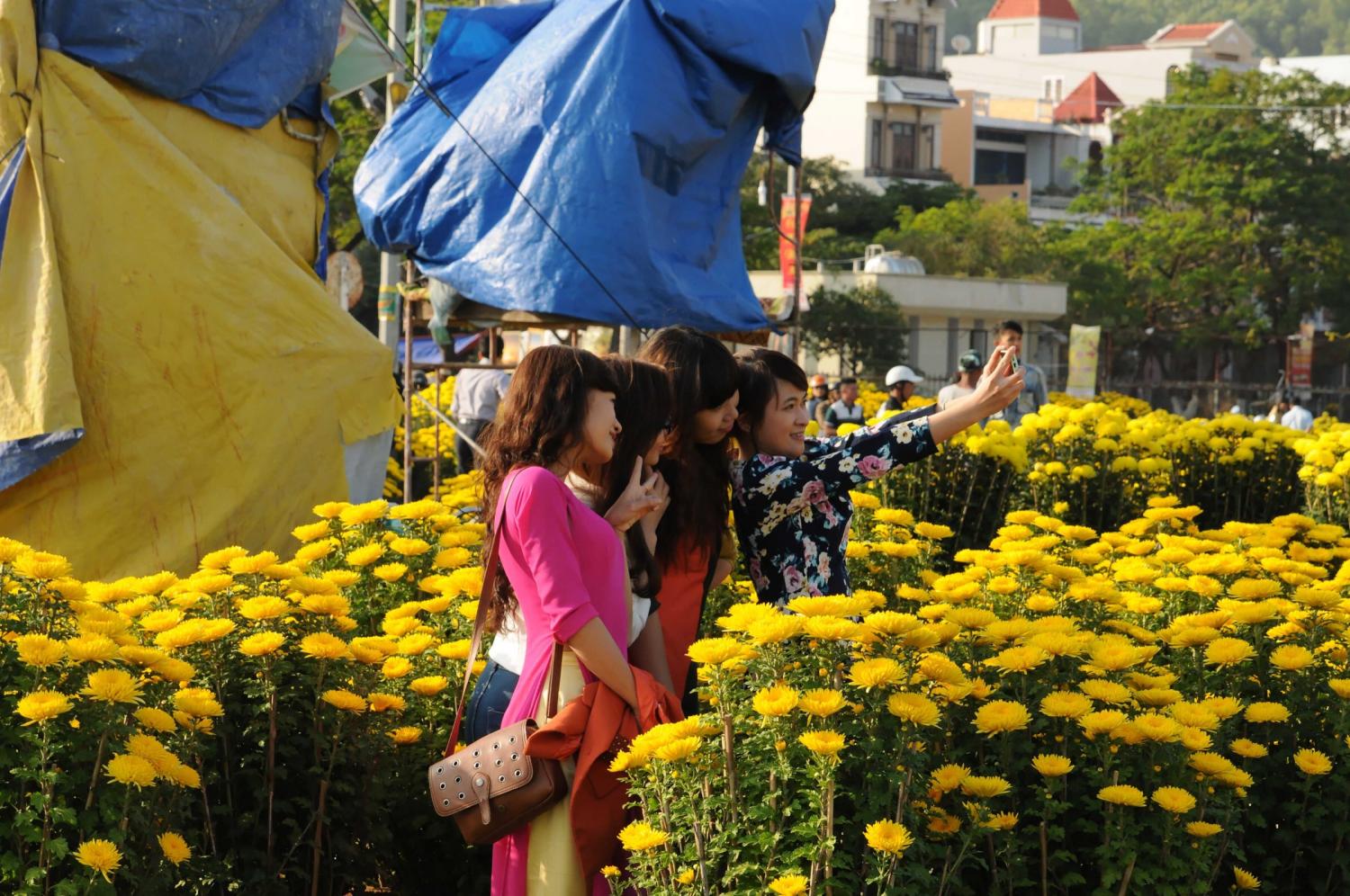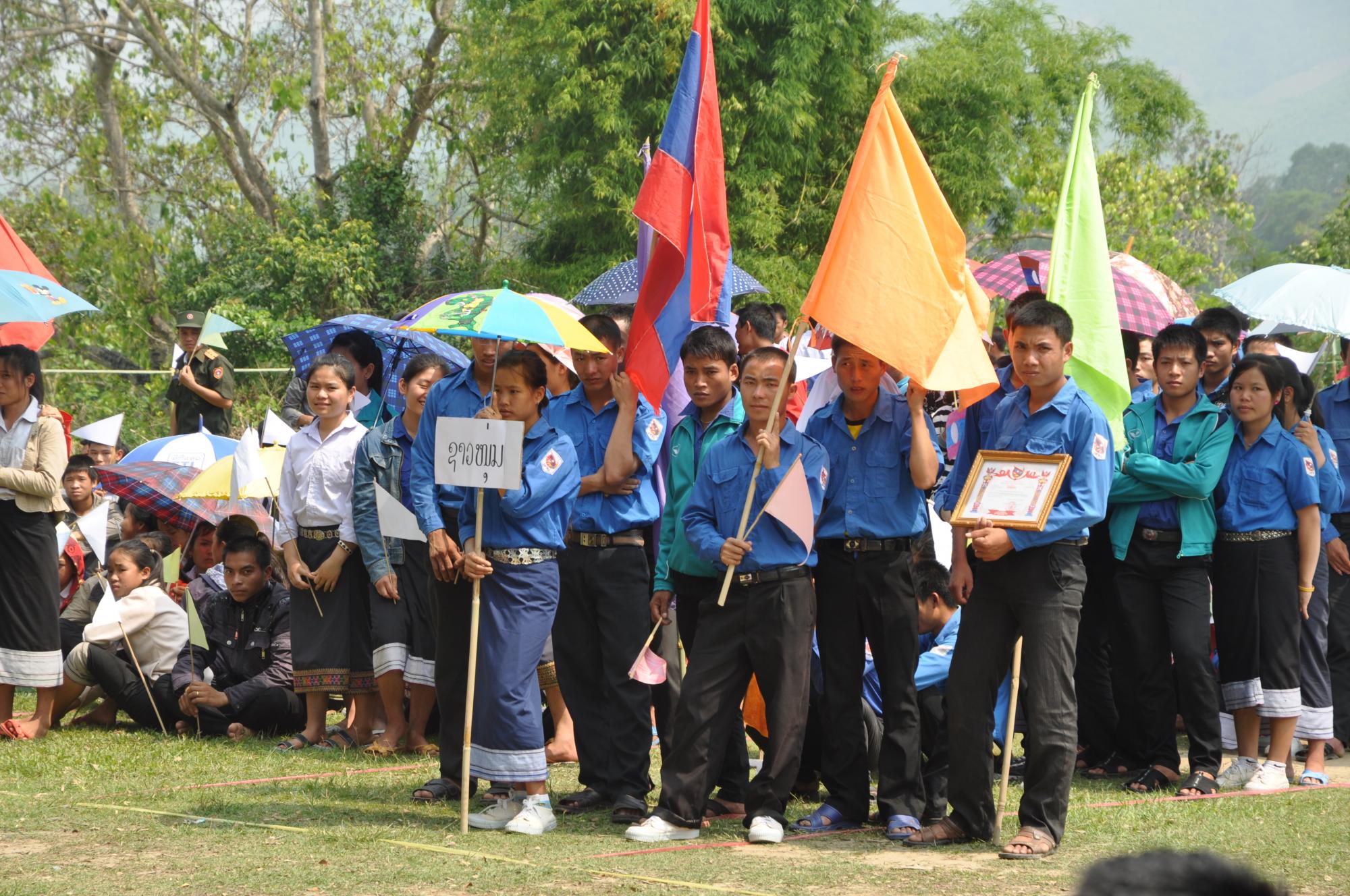Cultural belonging
Rather than antithetical to each other, tradition and modernity both play a part in how the youths perform their cultural belonging. Whether through the performance of traditional art forms or through the display of national garments, the photos in this cluster show different ways young people engage markers of collective identity. Pervasive as they may seem in East Asian contexts, these scenes should not, however, be reduced to mere expressions of past-orientedness. Through the ludic or quiet atmospheres of social occasions, the reimagination of traditions underpins embodied processes of visibility, practice and expression.

Schooling in public square
A school outing (2016) to Linyi, the birthplace of the sage of calligraphy, Wang Xizhi, whose famous piece “the Orchid Pavilion” is carved out in stone and placed in the middle of the square. The children are drawing the shapes of the roofs and try to copy the characters of Wang Xizhi from the large stone slab on the square.

Rural public spaces with sound
In Laos, the governmental ban on swidden agriculture has triggered migration of Highlanders. The village of Thongnamy, in the plain of the Mekong River, has been peopled by waves of such migrants, resulting in a high ethnic diversity. Staging one’s ethnicity in public spaces, as performed here by a group of young Hmong dancers, has become a common practice and a way to revitalize “traditions” (2008).

Calligraphy education
At many universities in China it is now possible to follow BA, MA and even PhD tracks specifically on calligraphy. Here (2016) we see a professor at Renmin University, using a digital database of ancient calligraphy to explain to his pupils how to correctly approach the inner structure of a character written in grass script. Increasingly, digital methods are used to retrieve, study and analyse ancient calligraphy.

Fabrics and flowers
Being a flower among the flowers: that is the desire of many young ladies wearing áo dài, the traditional Vietnamese women outfit. Every opportunity is good to buy another tailor-made dress, especially during the Tết (Lunar New Year) when women show each other new fabrics, new colors, new cuts. While in the North, the flowers associated with the New Year are mostly pink (hoa đào), in the South (here in Quy Nhon, 2014), they are mostly yellow (hoa cúc, hoa mai). Floral decorations are displayed everywhere in public spaces, creating a superb backdrop to pose for selfies.
